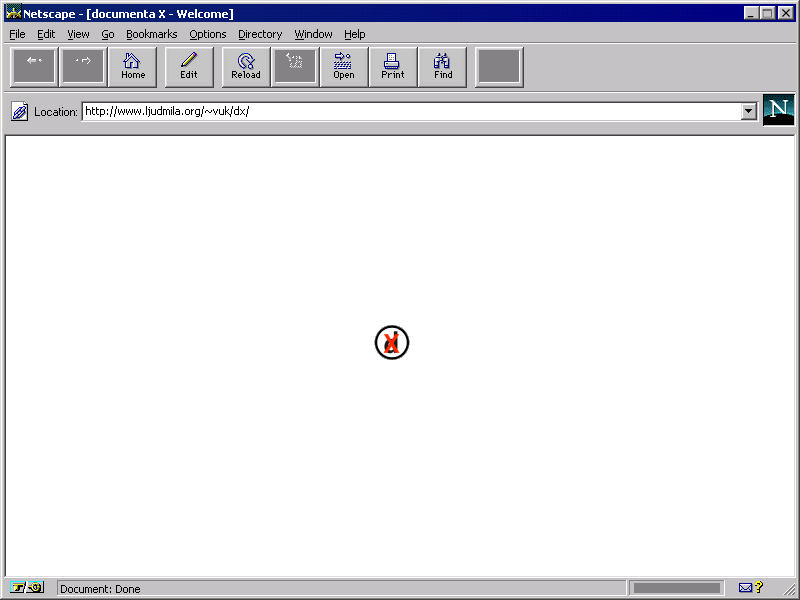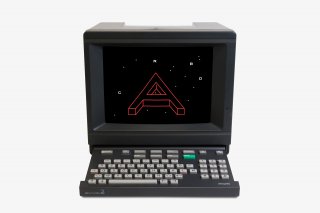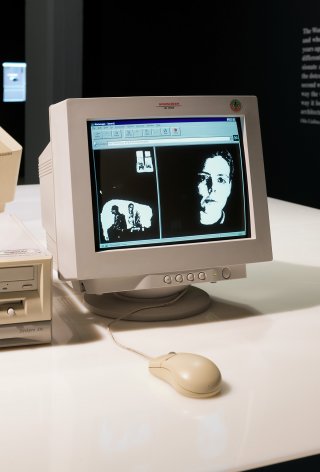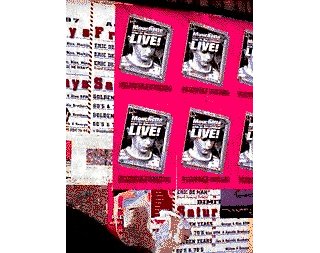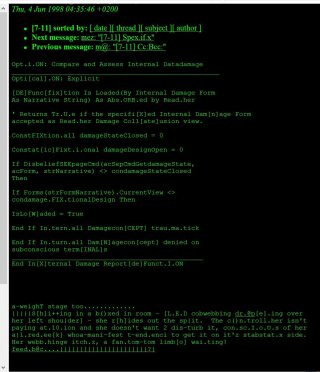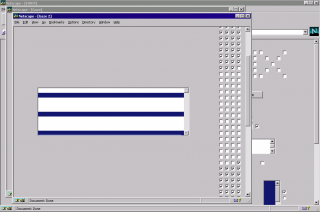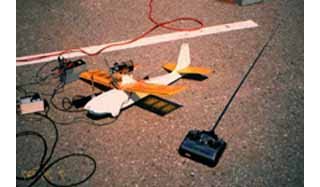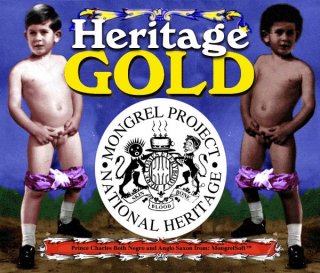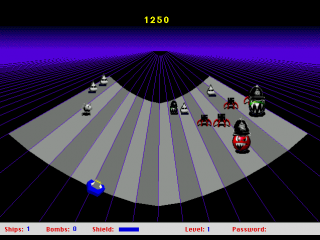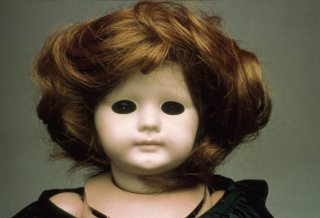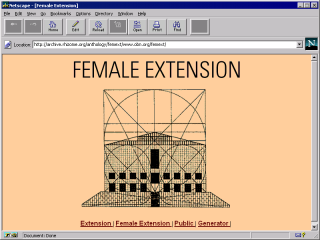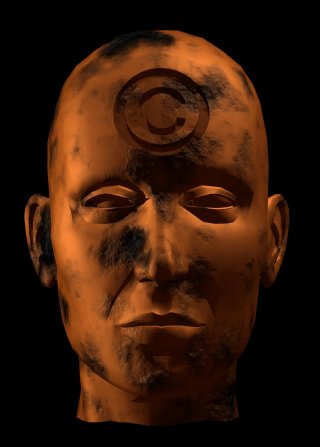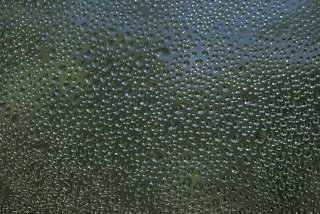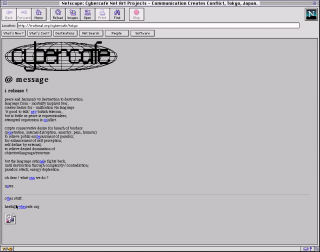Documenta Done
Vuk Ćosić
1997
Documenta Done was an act of artistic piracy that highlighted net art’s uneasy relationship with institutions and archives.
In the mid-1990s, a network of artists, including Ljubljana-based Vuk Ćosić, came together at conferences and on mailing lists to develop the concept of “net.art.” A number of these artists were involved in documenta X, the 1997 edition of the major exhibition held every five years in Kassel, Germany. Following the exhibition, the news circulated that the exhibition’s website, which included browser-based art and online forums, would be taken offline and sold as a CD-ROM.
Ćosić quickly copied most of the documenta X site to his own server, Ljudmila.org, and circulated a mostly fake press release about his act, pinning the blame on an “Eastern European hacker.” An artistic ready-made and a prankish gesture of institutional critique, the copy of documenta X serves as a testament to the way in which meaning and memory are contested online, and the difficulties of adapting this informal process to an institutional context.
VISIT WORK
“Documenta Done is my little love child of Duchamp and Debord.”
— Vuk Ćosić
Documenta Done perhaps has its origins in an event that took place the prior year in Trieste, Italy. Vuk Ćosić secured a small budget from the festival Teatro Telematico, and invited eight or so artists to participate in a conversation about net art. This project was called Net.art per se.
There is no archive of the Net.art per se proceedings apart from recollections of the participants and Ćosić’s memorable website for the event. To make it, he had copied the source code from four sites of the time—CNN, Alta Vista, Yahoo, and Heath Bunting’s CyberCafe—and altered their content to address questions raised by net art practices.
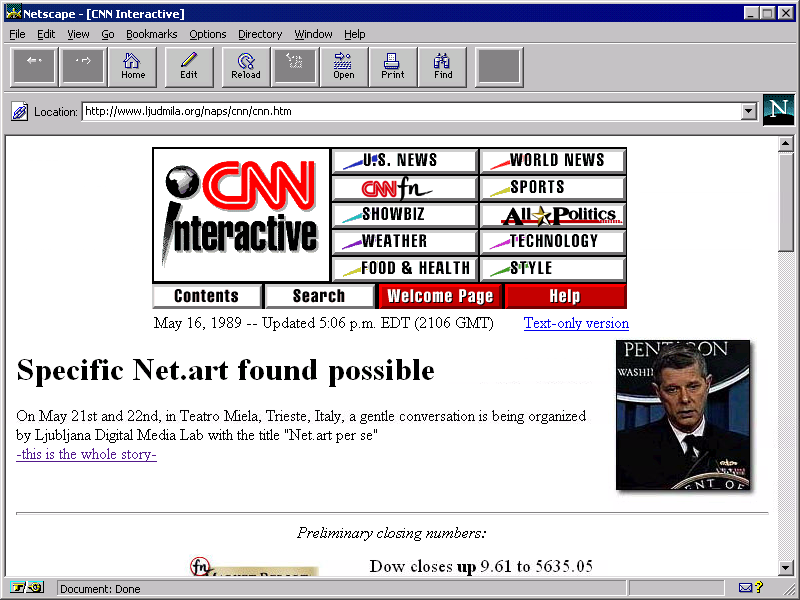 Vuk Ćosić, Net.art per se, 1996.
Vuk Ćosić, Net.art per se, 1996.
View archived copy of Net.art per se in Netscape 2.
“We created a fantasy or a cult exactly because it wasn't recorded in any way.”
– Vuk Ćosić
Read Caitlin Jones’s reappraisal of documenta X on Rhizome.
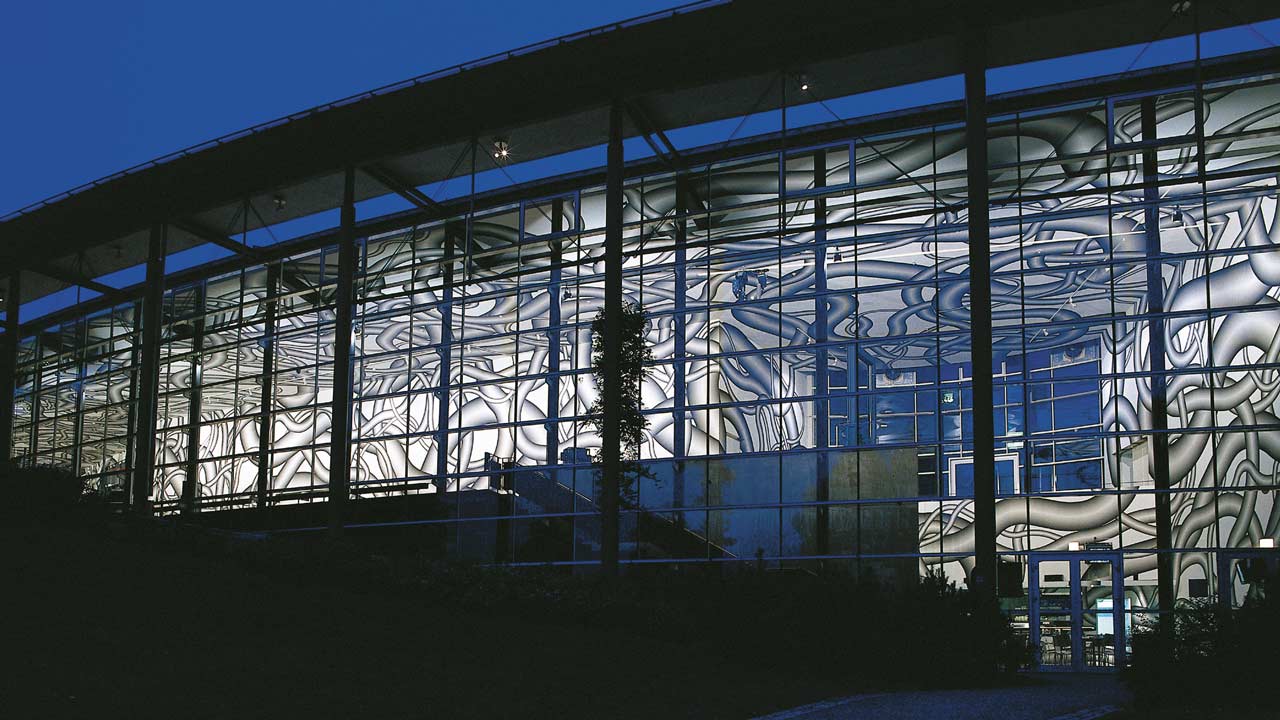 Exterior of documenta X showing work by Peter Kogler, 1997. Photo: Werner Maschmann.
Exterior of documenta X showing work by Peter Kogler, 1997. Photo: Werner Maschmann.
The event played an important role in promoting the idea of net.art as a cohesive avant-garde. The following year, documenta X featured net art in a range of ways: several works on view in a dedicated gallery, offsite projects such as the hyper-networked mobile home installation Makrolab, and an ongoing conference called Hybrid WorkSpace.
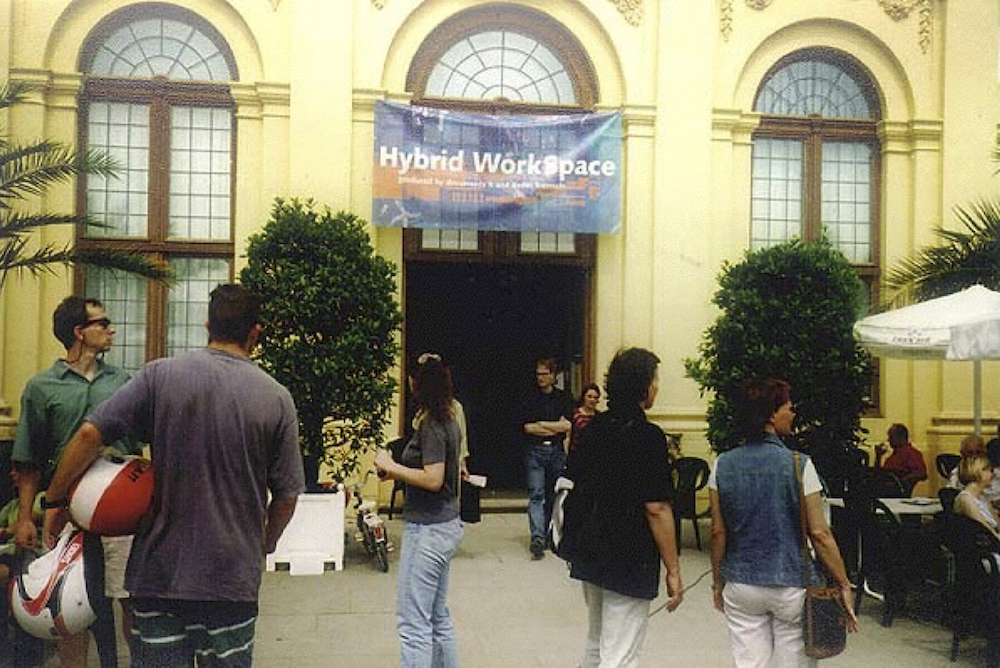 Exterior of Hybrid WorkSpace at documenta X, 1997.
Exterior of Hybrid WorkSpace at documenta X, 1997.
Hybrid WorkSpace was relatively successful, in part because many net artists considered conferences an integral part of their practice. “I go to conferences,” Ćosić explained.. “That’s net.art actually... You meet one hundred and a few people from abroad. That’s a net. Art is not only the making of a product...”
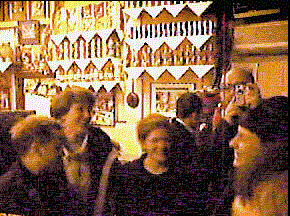 GIF by Vuk Ćosić made during a conference at the ICA, London, organized by Mute magazine.
GIF by Vuk Ćosić made during a conference at the ICA, London, organized by Mute magazine.
The gallery display was much less well-received. Dirk Paesmans of artist duo Jodi, for example, attacked it for its office-like environment. “This metaphor is too much of an cliche. It's meant to be some kind of joke, but it is not funny. It is vulgar, it's too easy. It doesn't work. And now it will be repeated over and over again.”
 Net art section at documenta X, 1997, documenta-Halle, Kassel. Photo courtesy of Joachim Blank.
Net art section at documenta X, 1997, documenta-Halle, Kassel. Photo courtesy of Joachim Blank.
In this context, documenta’s decision to take the documenta X website offline and sell it as a CD-ROM registered as a problematic gesture of institutional control over net art's circulation.
Read “Repo Man: Vuk Ćosić and the theft of Documenta X,” an interview with Vuk Ćosić by Michael Connor, on Rhizome.
In response, Ćosić made a copy of the site, posted it to his server, and circulated an announcement under the headline “Eastern European Hacker Steals Documenta X Web Site,” describing his gesture as a “major international art theft.” The circulation of this news in the media, sometimes under the pseudonym Keiko Suzuki, was an important part of the project.
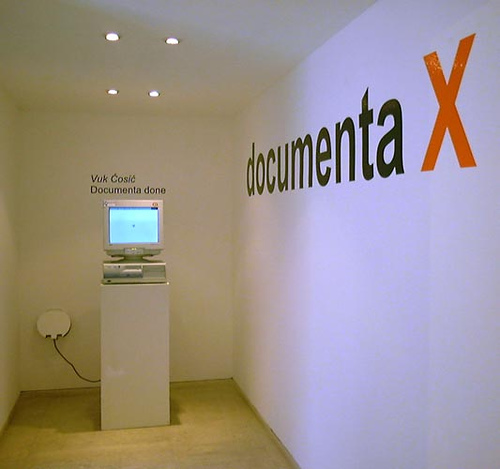 Vuk Ćosić, Documenta Done, part of the exhibition “Net-art per me” at the Slovenian Pavilion of the Venice Biennial, 2001.
Vuk Ćosić, Documenta Done, part of the exhibition “Net-art per me” at the Slovenian Pavilion of the Venice Biennial, 2001.
Intended as a critique, Documenta Done also served an important archival function. It symbolizes the failures of institutions to facilitate social memory in the context of digital culture, and the way in which artists—often playing the role of pirates and hackers—have stepped into the gap.
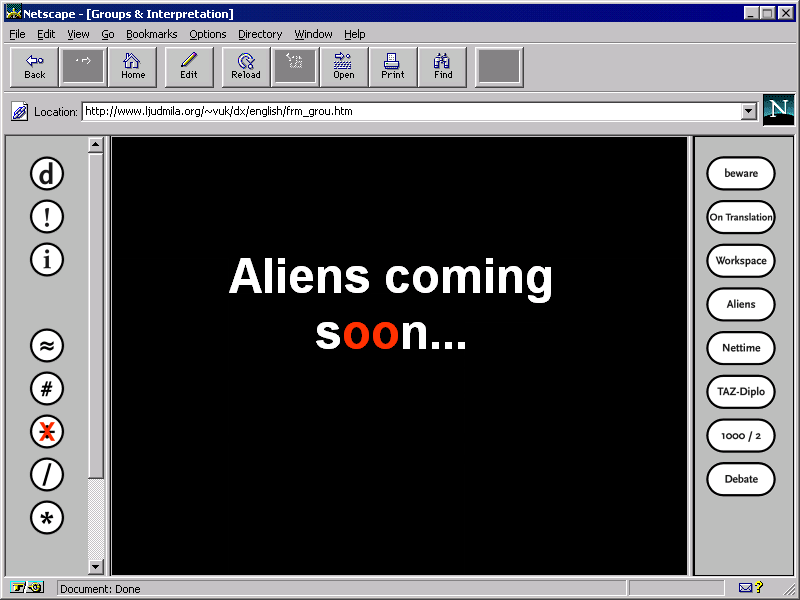
“Ćosić’s site, hosted on a Slovenian server, was the only online evidence of dX for close to twenty years. Since its creation, Ćosić has exhibited Documenta Done many times and in many iterations—although as each year passes, fewer and fewer of the original links are functional. Documenta Done continues to be one of the most often cited artworks of the iconoclastic net.art period, but it also functions in an unexpected way. By staying ‘live’ it has functioned as an institutional archive for the establishment art world. It represents documenta’s institutional history and allows us to reconsider dX’s infamous failure. To further complicate this relationship, documenta has recently made the dX site ‘live’ once again, and so now, two decades after the fact, there are two versions—one original and one copy.” — Caitlin Jones
Vuk Ćosić is a pioneer in net art, net.art, and new media art, as well as hacktivism. He co-founded Ljudmila—a digital media lab for artists in Ljubljana, Slovenia—as well as the ASCII Art Ensemble, Nettime, Syndicate, and 7-11. Ćosić is well known for running ASCII (American Standard Code for Information Interchange) variants of iconic film scenes thus transforming code, image, and pixel into a collision and immediate commentary. Exhibitions include Venice Biennial, MIT Media Lab, and many other museums and festivals internationally.
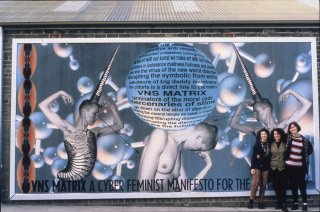 A Cyberfeminist Manifesto for the 21st Century
VNS Matrix (Josephine Starrs, Julianne Pierce, Francesca da Rimini, and Virginia Barratt)
1991
A Cyberfeminist Manifesto for the 21st Century
VNS Matrix (Josephine Starrs, Julianne Pierce, Francesca da Rimini, and Virginia Barratt)
1991
